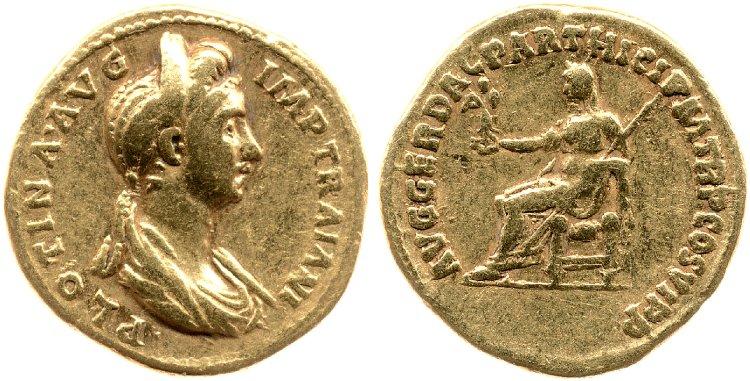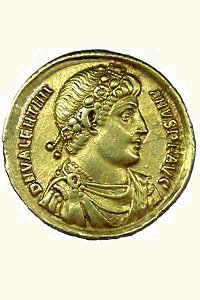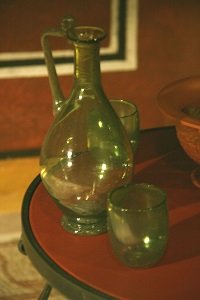Roman Coins and the Cost of Living in First Century Rome
Updated on: 10 November 2025Reading time: 4 minutes
Before the introduction of Roman coins, Romans engaged in bartering — for example, exchanging grain for other goods — or used coins from other civilisations, including (mostly) Greek coins. When the first silver coins were introduced, they adopted the Greek weight standards so that they could be used in trading transactions across the Mediterranean.
Various Roman Coins
Roman currency was introduced during the Roman Republic in 300 B.C. and consisted of gold, silver, bronze, and copper coins. Bronze and copper coins were used for everyday purchases, whereas gold and silver coins were used for larger transactions because they possessed significant intrinsic value.
The bronze, and later copper, coin was called the as. The silver coin, the denarius, was worth 10 to 15 asses during the Republic and initially contained 4.5 grams of pure silver. The gold coin, the aureus, was worth 250 times the value of an as. The sestertius was worth 2.5 asses.

|
It is worth noting that the market value of gold and silver Roman coins exceeded the value of the precious metal they contained. For example, the denarius was, throughout the Empire, worth between 1.5 and several times the value of its silver content. Moreover, the amount of silver or gold contained in coins varied, especially during times of war, and it significantly decreased during the 3rd and 4th centuries A.D.
Minting Process
Producing coins was a complicated process — intentionally so — in order to prevent counterfeit coins from being produced and circulated. The production of coins required special equipment and a method that produced a distinct, detailed relief image free from cavities (caused by oxygen bubbles) and that gave the coins a glossy finish. It also required specific quantities of (precious) metal. The Romans employed an almost industrial process to produce coins that were highly detailed and cleaner in appearance than Greek coins.
The equipment used to make coins included casts into which liquid metal was poured to produce blanks (coins with no images). Other equipment included two dies, usually made of bronze, which bore the negative of the relief image to be created. The lower die generally featured the image of a deity, while the upper die bore a symbol of Rome. A blank was heated in an oven, placed on the lower die, and then struck with a heavy hammer while the upper die was held above it.
Initially, all coins were minted in the city of Rome. Later, during the Empire, the minting of bronze and some silver coins took place in other mints at various locations. It is worth noting that all gold coins were produced by a single mint located in Rome throughout the Republic and during the first few centuries of the Empire.
Coins initially featured deities. Later, during the Empire, they depicted the heads of emperors — noting that Caesar was the first to begin the trend of placing the head or bust of a living person on coins. Coins often served propaganda purposes.
Prices of products, services and salaries in the 1st century A.D.
| Product/Salary | Price |
| 1 loaf of bread | 0.5 sestertius |
| 1 pint of (low quality) wine | 0.5 sestertius |
| 1 quart of olive oil | 2-3 sestertii |
| 1 pound of pork | 32 sestertii |
| 1 modius of wheat flour | 10 sestertii |
| 1 visit at the baths | 0.25 as |
| 1 tunic | 15 sestertii |
| 1 night with prostitute | 4 sestertii |
| 1 donkey | 500 sestertii |
| 1 slave | 1,000-2,000 sestertii |
| Unskilled manual labor monthly salary (low end) | 32 sestertii |
| Average Roman monthly salary | 60-80 sestertii |
| Arithmetic teacher's monthly salary (per boy) | 75 sestertii |
| Legionary's monthly salary | 100 sestertii |
| Legionary's bonus on discharge | 12,000 sestertii |
| Praetorian guard's monthly salary | 250 sestertii |
| Senator's monthly salary | above 25,000 sestertii |
| Price of a small farm | 100,000 sestertii |
| Price of a villa | 500,000 - 2,500,000 sestertii |
and our own estimates based on our research.
Notice how expensive meat was back then in relation to salaries!
1 modius = 8.62 liters
1 sestertius = 4 asses
SOURCES
- Coinage in the Roman World (Burnett A., Spink & Son Ltd, 2004)
- Ancient History from Coins (Howgego C., Routledge, 1995)
- A Dictionary of Ancient Roman Coins(Melville-Jones J., Spink & Son Ltd, 1990)
- The Oxford Handbook of Greek and Roman Coinage (Metcalf W., Oxford University Press, 2016)
- Eric II The Encyclopedia of Roman Imperial Coins (Suarez R., Dirty Old Books, 2010)
- Handbook of Roman Imperial Coins: A Complete Guide to the History, Types and Values of Roman Imperial Coinage (Van Meter D., Laurion Press, 1991)

